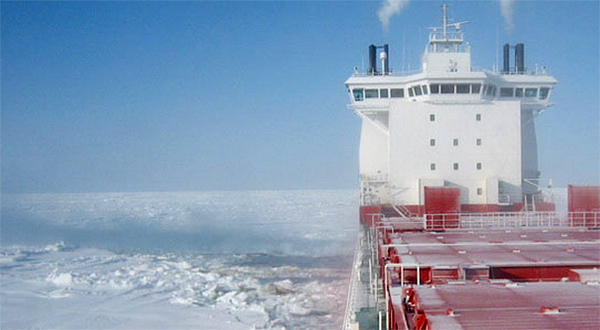A new report conducted concludes that major opportunities for the maritime sector exist if the ice cover on the Arctic Ocean continues to decline. The sector of dry bulk and offshoring are currently the sectors with the largest potential as the Arctic hosts and abundance of the natural resource.
The report entitled ”Arctic Shipping – Commercial Opportunities and Challenges” was conducted by CBS Maritime and focused on the feasibility of liner shipping across the NSR. The report indicates that Arctic liner shipping may become economically feasible around 2040, if the ice cover continues to diminish at the present rate. The possibility of a major expansion of the maritime activities within the sectors of bulk, offshoring and liner shipping before midcentury rests upon several crucial assumptions which are all subject to major uncertainties.
These uncertainties include the hazardous environmental conditions, port and infrastructure availability and high costs of operation compared to the southern shipping lanes. Additionally the Arctic Ocean lacks an international governmental and regulative framework in combination with high entry costs creates uncertainty for the maritime industry seeking to operate in and around the Arctic Ocean.
The calculations presented in the liner shipping quantitative study, are based on a calculation tool specifically designed to support the conclusions of the case study. This calculation tool allows researchers and industry professionals to insert the specifications of a given vessel, along with environmental and economic parameters in order to obtain information on the feasibility of transporting containerized cargo along the NSR.
Specifically, the model allows the user to determine the year when the investment in an ice reinforced containership operating along the NSR during the navigation (and the SCR at other times), will become favorable compared to an ordinary container ship solely operating on the SCR.
Learn more by reading the report
Source :CBS Maritime































































